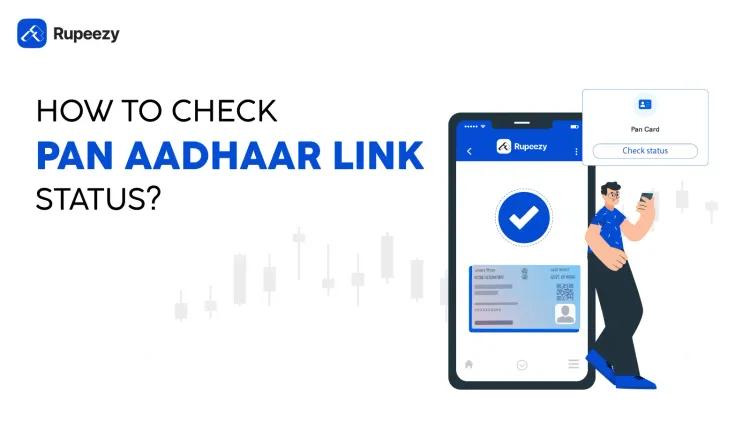Consolidated Fund of India: Meaning, Components, Advantages


00:00 / 00:00
The Consolidated Fund of India is the central account where all the revenue that the government receives is held, such as revenue from taxes, borrowed funds, government loan receipts, etc. It was created under Article 266(1) of the Constitution and is very essential for managing the country’s finances. Every expense the government makes, be it for development projects or paying salaries, comes from this fund.
In this article, you’ll learn what the Consolidated Fund is, how it works, and what makes it crucial for the government and the functioning of its finances. We’ll also compare it to the Contingency Fund to clarify their roles.
What is the Consolidated Fund of India?
The Consolidated Fund of India is the primary account where the government holds a repository of all its revenues. This account accumulates all the revenue the government receives, including direct and indirect tax receipts, income tax, customs duties, and non-tax revenues. It also holds funds the government borrows, such as funds collected through treasury bills, and any repayment of these loans is also routed through this account.
This fund is crucial because all government spending such as payment of salaries, infrastructure funding, and other expenses are paid from here. But what does the consolidated fund meaning imply? It means that this fund acts as the financial account for the country. It also helps ensure that every rupee spent is accounted for and these crucial financial transactions are implemented in a transparent manner.
The government cannot just spend this money freely. Every disbursement from the consolidated fund needs approval from Parliament. With this rule, any spending the government makes is transparent, accountable, and spent for the intended goal such as public welfare, essential services, salary payments, infrastructure, and development spending.
Moreover, each state in India has its own consolidated fund similar to the national one. These state funds work under the same principles to ensure that the government’s financial activities are well-organized and transparent at both the central and state levels.
Sources of Revenue That Contribute to the Consolidated Fund
Below are the main sources of revenue that contribute to the Consolidated Fund of India:
Direct taxes: This includes income tax and corporate tax. The government collects these taxes directly from individuals and businesses, and they form a significant part of the Consolidated Fund.
Indirect taxes: These are taxes collected indirectly from taxpayers for the goods and services consumed, For example, the Goods and Services Tax (GST). The taxes generate a large portion of the government’s revenue.
Dividends and profits from PSUs: Public Sector Undertakings (PSUs) are companies that are owned by the government. When these companies earn profits, a share of these profits is added to the Consolidated Fund.
Earnings from services: The government also earns money by providing services like license issuance or permits. These fees go directly into the Consolidated Fund.
Loan receipts and recoveries: The government borrows money through bonds and loans. It also recovers loans it gave out earlier. All this money is added to the Consolidated Fund.
How the Government Utilizes the Funds Accumulated in the Consolidated Fund
The government uses the money it collects in the Consolidated Fund of India for many purposes:
Salaries and pensions: The government pays salaries to all its employees, including civil servants and military personnel, and provides pensions to retirees from the Consolidated Fund.
Subsidies: Funds are used to provide subsidies on essential items like food, fertilizers, and fuel. For instance, the government offers food subsidies through the Public Distribution System (PDS).
Welfare schemes: The government funds different welfare schemes like the Mahatma Gandhi National Rural Employment Guarantee Act (MGNREGA) and the Pradhan Mantri Awas Yojana (PMAY) to support those who are less privileged. The funding for these are made from the Consolidated Fund.
Infrastructure projects: The money that is allocated for building roads, railways, and other infrastructure projects is from this fund.
Defense and security: The Consolidated Fund of India also covers defense expenditures, including the purchase of military equipment and the maintenance of armed forces.
Components of the Consolidated Fund
The Consolidated Fund of India has five components:
Revenue account (receipts): This is the part of the fund that collects all the government’s income, like taxes and fees. It’s like the income side of a household budget.
Revenue account (disbursements): Here, the government records its daily expenses, like paying salaries or running welfare schemes. It’s the spending side of the budget.
Capital account (receipts): This section tracks money the government borrows or receives from selling assets. It’s used for long-term investments like building infrastructure.
Capital account (disbursements): This part records the money spent on creating assets like roads, schools, and hospitals.
Disbursements charged on the consolidated fund: Some expenses, like the President’s salary or interest on loans, are automatically charged to the fund without the need for approval.
Difference Between Consolidated Fund and Contingency Fund
While the Consolidated Fund is the main account, the Contingency Fund is for emergency expenses. Contingency Fund allows the government to take care of unforeseen expenditures that need immediate disbursement and cannot await Parliament’s approval.
Advances are made from the Contingency Fund to meet such exigencies. These advances are reported to the Parliament and adjusted from the Consolidated Fund of India.
Below is the difference between the Consolidated Fund and the Contingency Fund.
Aspect | Consolidated Fund | Contingency Fund |
Purpose | Main account for all government revenues and expenditures. | Emergency fund for unforeseen expenses. |
Usage | Used for regular government expenses like salaries and projects. | Used for urgent, unexpected needs, like disaster relief. |
Parliament approval | Required | Can be used without prior approval but needs later approval. |
Source of money | Funded by taxes, loans, and other revenues. | Funded by a fixed amount set aside by the government. |
Size and flexibility | Large and flexible to cover all government operations. | Smaller, reserved for emergencies only. |
Conclusion
The Consolidated Fund of India is an important part of nation’s financial management. It ensures that all government expenses are appropriately handled, transparent & accounted for, and used for their intended purpose. As India gains global prominence economically, Consolidated Fund signifies country’s commitment to financial prudence and optimum resource management under Parliament's watch.
Take control of your finances today by starting your journey with Rupeezy, your financial partner for investing in capital markets to meet all your financial goals.
FAQs
1. Is the Consolidated Fund of India the same as the Public Account of India?
No, The Public Account of India is an account where the government keeps all the money it receives that doesn't form part of the Consolidated Fund. This includes provident funds, small savings, and other deposits. The government acts as a banker in this case, holding these funds until they are paid back.
2. How does the Contingency Fund get replenished?
When the government uses the Contingency Fund, it must replenish it through approval by the Parliament. This ensures that the fund is always ready for unexpected expenses.
3. Can the Consolidated Fund of India be used for private sector activities?
No, the Consolidated Fund of India is strictly for government-related expenditures. Funds from this account are used for public sector activities only.
4. Who manages the Consolidated Fund of India?
The Ministry of Finance manages the Consolidated Fund of India, which is under the control of the Indian Government. Every expenditure from the fund requires prior approval from the Parliament to ensure it is accountable and transparent.
Check Out These Related Articles |
The content on this blog is for educational purposes only and should not be considered investment advice. While we strive for accuracy, some information may contain errors or delays in updates.
Mentions of stocks or investment products are solely for informational purposes and do not constitute recommendations. Investors should conduct their own research before making any decisions.
Investing in financial markets are subject to market risks, and past performance does not guarantee future results. It is advisable to consult a qualified financial professional, review official documents, and verify information independently before making investment decisions.

All Category










